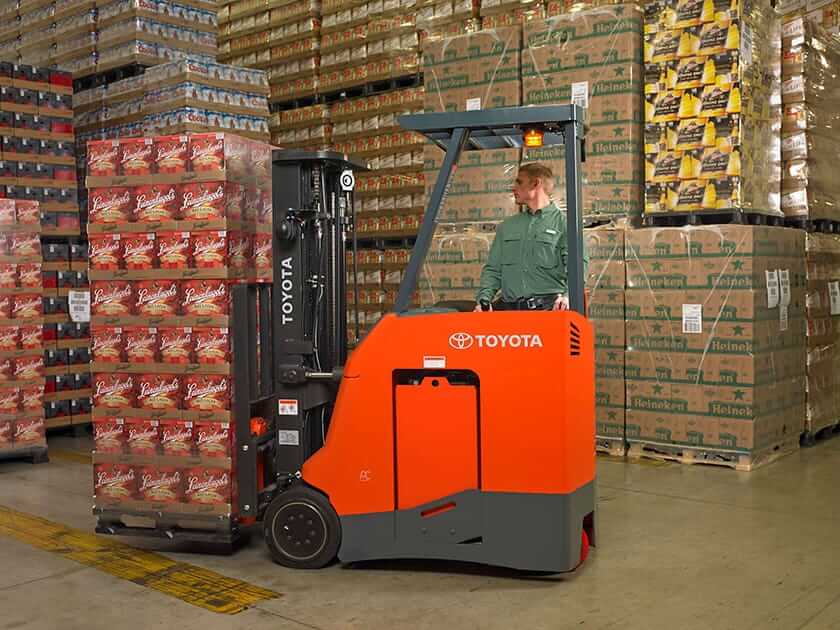People may already know that LPG means Liquid Petroleum Gas and can be called as GPL, LP Gas, propane or butane. In theory, an LPG is a mix of flammable mixtures of hydrocarbon gases that are typically used for heating appliances, cooking equipment and even vehicles, such as forklifts. In the practice of forklifts, one of the important elements that directly affect the use of LPG is the LPG regulator or vaporizer. Here’s everything you need to know about LPG regulators and vaporizers in forklifts today.
A pressure regulator is simply the valve that cuts off the flow of gas at a certain level of gas pressure. It is the main control valve that helps reduce the input of fluid pressure to the desired value in their output. Regulators are needed to make sure that the constant flow of gas to forklifts are reduced to safe pressures and to stabilize it for maximum performance. High-pressure gas machines like forklifts require so much power, and an LPG regulator or vaporizer is a necessity to keep the forklifts operate in the safest operable manner.



Further, LPG in forklift trucks is processed in a different manner, with a concentration of the LPG’s propane also changing in different weather. Propane in itself is already stored at a very high temperature, and so the use of an LPG regulator helps stabilize the running tasks of forklifts.
Secondly, people should also know that an LPG regulator has a restricting element, loading element and measuring element. All these elements help decrease or increase the flow of the demand for gas placed upon the regulator. These elements also maintain a constant output pressure, especially if there’s a shortage of gas in the root of the pressure system.
Forklift Engine QD32 Service Repair Manual (For Nissan Forklift 1F1, 1F2, 1D1,1D2 Models) UniCarries Engine K15 K21 K25 Service Manual (For Nissan Forklift 1F1, 1F2, 1D1, 1D2 Models) Engine S6S-31TFL, S6S-31TFLW, S6S-Y231TFL Service Reapir Manual (For F04,1F5 Models). This Nissan 50 Enduro diesel forklift has a very hard to use lift / lower & tilt combination lever. It is SO sloppy that it has become difficult to control. (For example, to lift you have to hold the lever to the left & back towards the operator. To lower the forks, holding the lever to the right seems to do it most of the time. Some NISSAN Forklift Truck Service Manuals PDF above page. The beginning of the industrial production of Nissan forklift trucks dates back to August 1957 at the factory in Totsuka. It is worth noting that the first tests for the production of forklifts by Nissan were made in order to meet the production needs of the company. Nissan Forklift Parts - Aftermarket Replacement Parts for Nissan Forklifts. We carry a large selection of aftermarket replacement parts for your Nissan Forklifts and Nissan Lift Trucks. Don't pay a premium on Nissan OEM parts! At HGM, we carry quality replacments at significantly less cost than their OEM equivalents. Nissan B1F5F35U-40U-45U-50U, D1F5F35U-40U-45U-50U, D1F5M35U-40U-45U Forklift Truck Service Manual.

The restrictive element of an LPG provides a variable restriction to the pressure flow, while the loading element applies the needed force to the restricting element. The measuring element of the LPG regulator determines the proper inlet flow that has to match the outlet flow. As a whole, the elements make sure that the forklifts that run on LPG are never in a deficit of the needed LPG fuel.
Nissan Forklift Enduro 50 Series Manual
We should add here that LPG regulators are also called LPG vaporizers. These vaporizers are the LPG equivalent of the functions that are being played by a carburetor found in gasoline engines. These vaporizers help keep an appropriate level of fuel into the forklift and make sure that all the safety precautions are met for the forklifts to run safely.
Nissan Enduro 50 Forklift Manual Transmission
Gas-powered vehicles like forklifts rely on the performance of these LPG vaporizers. Without the use of these LPG regulators, the uncontrolled pressure may lead the engine of the forklift to massive failure and damage the forklift entirely. Forklifts run on liquid propane and because this results in increasing the forklift’s evaporation rate, the vaporizer has to be used to circulate the hot engine coolant all throughout the tubes of the vaporizer. This, in turn, boils the liquid to gas.